Illumination
HYDROELECTRIC POWER PLANT ST. PETKA IN SIĆEVO GORGE MORE THAN A CENTURY OLD
The Rebirth from Nišava
The first industrial company in Niš was the cognac factory held by king Milan Obrenović (1880). Then the construction of the railway started (1881), the first train arrived (1884), illumination of the city initiated (1895), Todor Milovanović turned the small town of Niš into a modern European city. Still, the crown of everything and the strongest engine of further development were the construction of the hydroelectric power plant on Nišava, supported by state loans (1903 and 1906). And then, finally, on September 21, 1908, it shined!
By: Zoran Plavšić
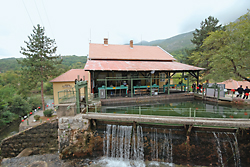 If constructed and maintained well, electro-mechanical plants can last for decades, even centuries. They could become a miracle of durability and usefulness. Along with hydroelectric power plants ”Under the city” in Užice on the river Djetinja (the first one in Europe set on the principles of Nikola Tesla in 1900), ”Vučje” on Vučjanka near Leskovac, ”Gamzigrad” on Timok near Zaječar – which we were writing about in the previous issues of National Review – the hydroelectric power plant ”St. Petka” on Nišava also confirms this data. If constructed and maintained well, electro-mechanical plants can last for decades, even centuries. They could become a miracle of durability and usefulness. Along with hydroelectric power plants ”Under the city” in Užice on the river Djetinja (the first one in Europe set on the principles of Nikola Tesla in 1900), ”Vučje” on Vučjanka near Leskovac, ”Gamzigrad” on Timok near Zaječar – which we were writing about in the previous issues of National Review – the hydroelectric power plant ”St. Petka” on Nišava also confirms this data.
Somehow at the time when Tesla, while working as a technician in the ”Phone company” in Budapest, got the idea how to resolve the problem of alternating current engine without commutator, and when he suddenly, during a stroll, drew lines of the reversed magnetic field, rapid urbanization began in Serbia. The first industrial company in Niš was erected by king Milan Obrenović in 1880. He invested money in a cognac factory. But why Niš? Not just because he fell in love with the city, calling it ”the second capital of Serbia”, but also because he knew that it would soon become the main crossroad of important European and Asian roads.
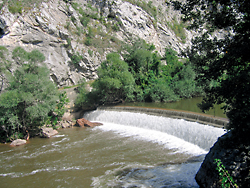 To strengthen Niš within Serbian borders, king Milan made a trading agreement with Austria-Hungary, taking the obligation, amongst other things, to connect Belgrade with Niš with a railway, and then with Vranje and Pirot. He built a palace in Niš and then came representatives from European countries. The French, Austrians, Germans, Italians and Turks opened their consulates in Niš. Breweries, brickyards, tanneries, butcheries, steam mills soon started working in the city and around it. Banks and savings banks were opened. Pools with thermo-mineral water were built in Niška Banja, and this spa soon became famous throughout Europe. To strengthen Niš within Serbian borders, king Milan made a trading agreement with Austria-Hungary, taking the obligation, amongst other things, to connect Belgrade with Niš with a railway, and then with Vranje and Pirot. He built a palace in Niš and then came representatives from European countries. The French, Austrians, Germans, Italians and Turks opened their consulates in Niš. Breweries, brickyards, tanneries, butcheries, steam mills soon started working in the city and around it. Banks and savings banks were opened. Pools with thermo-mineral water were built in Niška Banja, and this spa soon became famous throughout Europe.
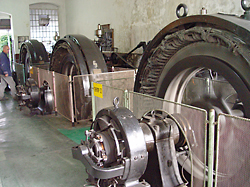 The Serbian government started building the railway in 1881. Three years and 12 hours of ride later, the first train arrived from Belgrade to Niš. Three more years passed until, after making the tunnel through Sićevo Gorge, Niš, Pirot and the Bulgarian border were connected. The ”Train workshop” for maintaining trains and repairing wagons was built in Niš. The first man of the workshop was Aćim Stevović, engineer and later professor of the Belgrade Technical Faculty. He wasn’t only interested in his profession, but also in electrical facilities, what he practically studied while working in the German state railways workshops. He used the knowledge to refresh the ”Train workshops” in Niš and to design mechanical departments in hydroelectric power plants on the rivers Djetinja, Nišava and Temska. The Serbian government started building the railway in 1881. Three years and 12 hours of ride later, the first train arrived from Belgrade to Niš. Three more years passed until, after making the tunnel through Sićevo Gorge, Niš, Pirot and the Bulgarian border were connected. The ”Train workshop” for maintaining trains and repairing wagons was built in Niš. The first man of the workshop was Aćim Stevović, engineer and later professor of the Belgrade Technical Faculty. He wasn’t only interested in his profession, but also in electrical facilities, what he practically studied while working in the German state railways workshops. He used the knowledge to refresh the ”Train workshops” in Niš and to design mechanical departments in hydroelectric power plants on the rivers Djetinja, Nišava and Temska.
THIRD TIME IS THE CHARM
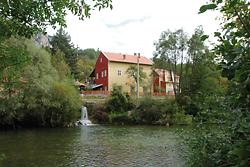 When the first electrical facility started working in 1893 in Belgrade Dorćol, many wanted to illuminate their city streets and houses too. The old idea of Niš receiving electricity before the capital was brought up again. According to the writings of The Trading Herald in 1895, the citizens of Niš were hoping that the ”second capital of the Serbian king, Niš, will receive electrical illumination”. But the second attempt also failed. When the first electrical facility started working in 1893 in Belgrade Dorćol, many wanted to illuminate their city streets and houses too. The old idea of Niš receiving electricity before the capital was brought up again. According to the writings of The Trading Herald in 1895, the citizens of Niš were hoping that the ”second capital of the Serbian king, Niš, will receive electrical illumination”. But the second attempt also failed.
Professor Djordje Stanojević wrote in 1900 that Nišava could be ”used very conveniently at Sićevo Gorge, near the monastery of St. Petka, from where the electricity would be transferred to Niš”. It should have been financed by the municipality. Without mentioning all the problems the authorities confronted with, it is sufficient to say that many days have passed until agile Todor Milovanović, teacher by vocation, became president of the municipality and converted the small Turkish village into a modern town. ”He gave Niš the f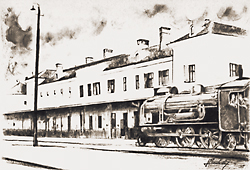 orm of a European city… He gave it long, wide and regular streets, making even bigger towns potentially envious. From a dirty Niš, he created a clean Niš. Niš, with well paved sidewalks and cobbled streets, was colorful and full of flowers during his time”, states the History of Niš. orm of a European city… He gave it long, wide and regular streets, making even bigger towns potentially envious. From a dirty Niš, he created a clean Niš. Niš, with well paved sidewalks and cobbled streets, was colorful and full of flowers during his time”, states the History of Niš.
To get a concession for the usage of Nišava waters, it was necessary to have the consent of the neighboring municipality, where the construction was to take place. They persuaded the Sićevo people that they will also benefit, so the permission for construction the hydroelectric power plant was granted. Great financial resources also had to be provided; according to pre-calculations, the costs were 6 times bigger than the yearly budget of the municipality. The state helped them with cheap loans: first amounting to 600.000 dinars in gold in January 1903, and second to half a million dinars in 1906. The works could begin.
FIRST ELECTRICAL AUTUMN
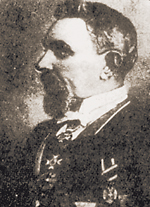 At the left bank of Nišava, at the very exit from Sićevo Gorge, in the pit across the St. Petka Monastery, a damn was erected with the hydroelectric power plant building beneath it, as well as the drain. It was all designed by Aćim Stevović. Nikola Alvanović took up the construction works, the supervisor was William Bader, then chief of the Serbian Ministry of Construction, and Stevan Jeftimijades supervised the electric and mechanical works. We mention them with good reason. The deed they have accomplished outlasted not only them, but also many other generations: the hydroelectric power plant ”St. Petka”, named after the nearby monastery, has been continuously working for over a century. At the left bank of Nišava, at the very exit from Sićevo Gorge, in the pit across the St. Petka Monastery, a damn was erected with the hydroelectric power plant building beneath it, as well as the drain. It was all designed by Aćim Stevović. Nikola Alvanović took up the construction works, the supervisor was William Bader, then chief of the Serbian Ministry of Construction, and Stevan Jeftimijades supervised the electric and mechanical works. We mention them with good reason. The deed they have accomplished outlasted not only them, but also many other generations: the hydroelectric power plant ”St. Petka”, named after the nearby monastery, has been continuously working for over a century.
Finally, in January 1906, the auction was completed: the best offer for the electro-mechanical works was that of a Vienna company ”Siemens Schukert”. Two years later, the equipment was delivered and the assembling begun. At the same time, copper conductors were spread on wooden columns, with the voltage of 8 kilowatts and 10 substations with transformers were put on concrete stands, with the voltage of 50 kilowatts. The town’s illumination network was also set up on wooden pillars, while the light bulbs of 100 and 150 watts had lens hood. In the city 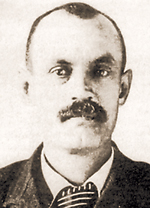 center, light bulbs were on every pillar, and in less important streets at every second one. center, light bulbs were on every pillar, and in less important streets at every second one.
Then, at last, came September 21, 1908. In the company of many distinguished guests from the country and the world, highest representatives of the state, political parties, cultural workers, merchants, industrialists and the church, Prince Djordje Karadjordjević officially started up the plant. It was the first electric autumn in Niš.
The main streets, previously desolated in the evening, turned into a favorite promenade of the people of Niš. Even though many people were poor, they found a way to install at least one light bulb in their guest rooms. During the first years, until 1911, electricity was used only for illumination. The cotton spinning mill of the ”Niš Savings Bank” joined the city network first, then the mill of the ”County Bank”, the ”Train workshop”, the ”Nišavac” brewery... Only later the citizens of Niš started buying electrical appliances, which were a sign of status at that time.
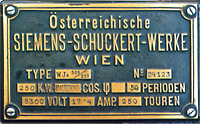 By selling electricity, the municipality of Niš covered over half of its budget, sometimes even 80% of it. That’s how in 1915 the income from engine power amounted to about 46.000 dinars, from city illumination 5.000, and for illumination per electric meter 200.000 dinars. The price of electricity for illumination was one dinar for one electric meter. That year, the hydroelectric power plant St. Petka produced around half a million kilowatts per hour. By selling electricity, the municipality of Niš covered over half of its budget, sometimes even 80% of it. That’s how in 1915 the income from engine power amounted to about 46.000 dinars, from city illumination 5.000, and for illumination per electric meter 200.000 dinars. The price of electricity for illumination was one dinar for one electric meter. That year, the hydroelectric power plant St. Petka produced around half a million kilowatts per hour.
As it was planned at the beginning of the project, the third aggregate started operating in 1927. That way, the installed power of the hydroelectric power plant reached the capacity of 750 kilowatts, same as it is today.
***
The Contract
The municipality of Niš signed a contract with Viennese ”Siemens Schukert”, not only regarding the production and installation of two horizontal 300 horsepower Francis turbines with manual and automatic regulation and the possibility of installing the third with same characteristics. The contract also included provisions for setting up a 250 kilowatts generator for the production of three-phase 50 hertz frequency current, for the construction of 23 km long transmission lines, designing and erecting high-voltage network transformer stations, low voltage networks according to the city plan with 3.000 light bulbs, as well as setting up a telephone line from the hydroelectric power plant to the Municipality building in Niš. The low voltage network was requested to be not higher than 150 volts.
***
Monastery
The St. Petka Monastery was built in mid-XV century by monks fleeing from the east before the Ottoman invasion. The church of St. Petka, let us mention, was built on the foundations of an old temple and renewed in 1898 to honor the ”fortunate salvation of chief commander of the army and king of Serbia, Aleksandar Obrenović”, as stated on the marble board on the church wall. With the king’s financial help, the church was being built by officers and soldiers from engineering squads, who dug tunnels through the Sićevo Gorge. Since its restoration until 1905 it was a military monastery, a unique case in Christianity.
|
